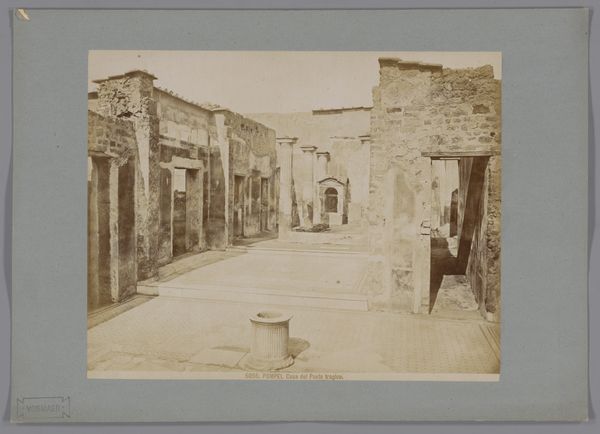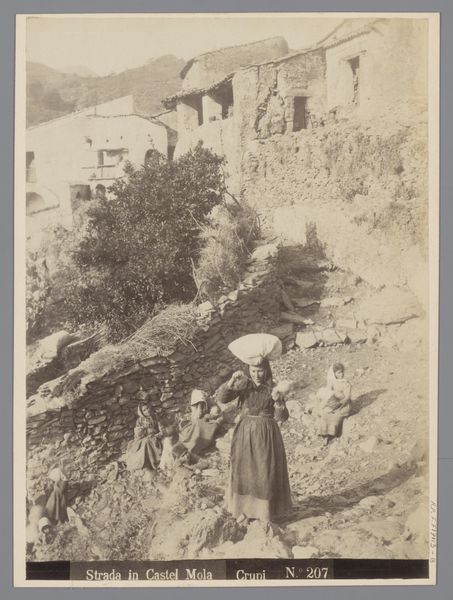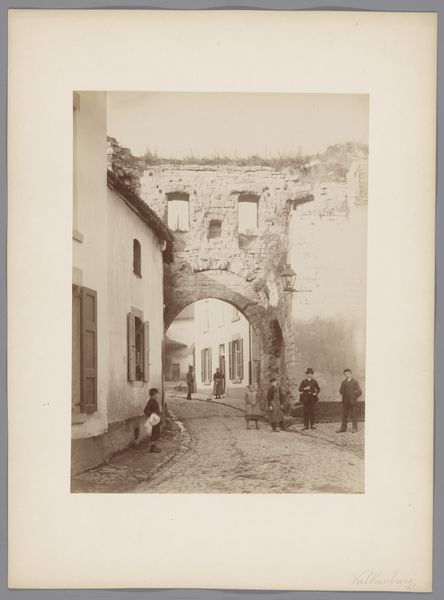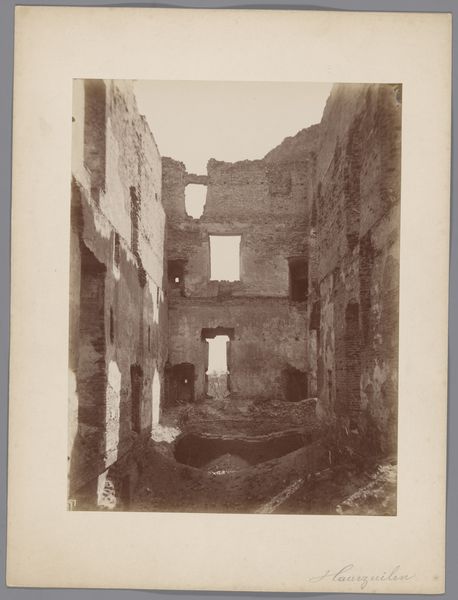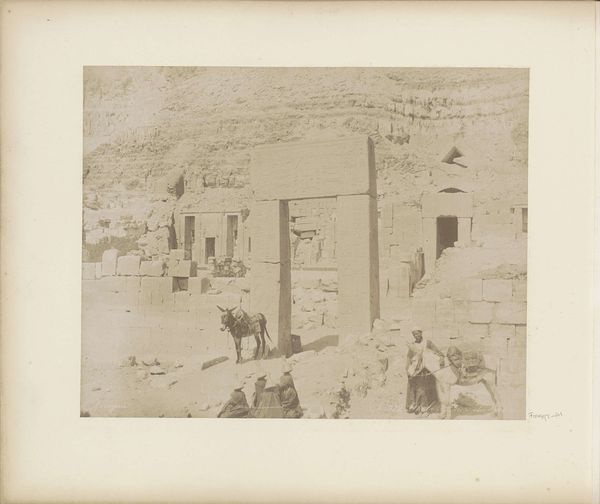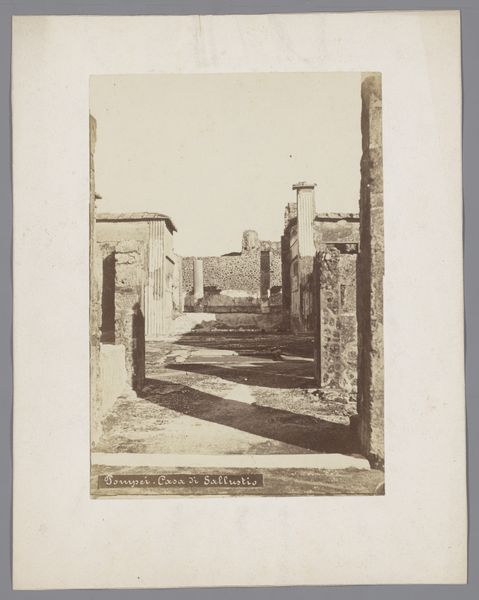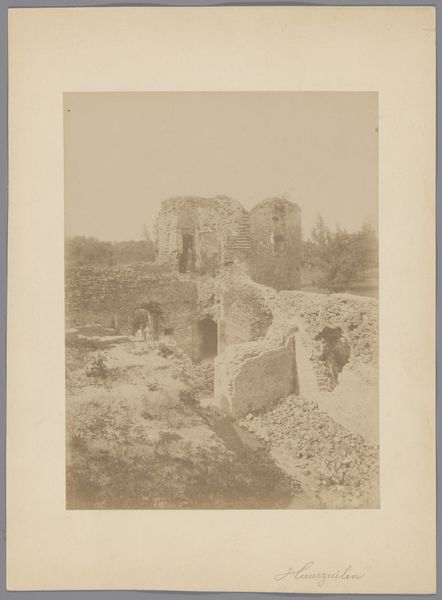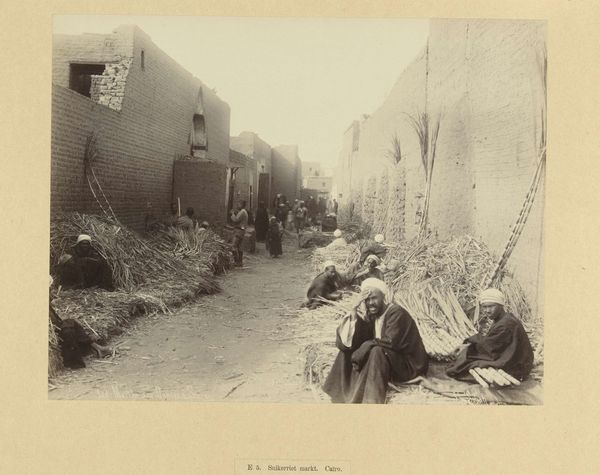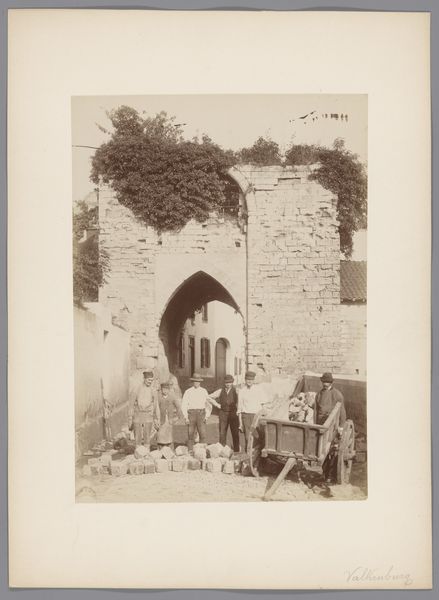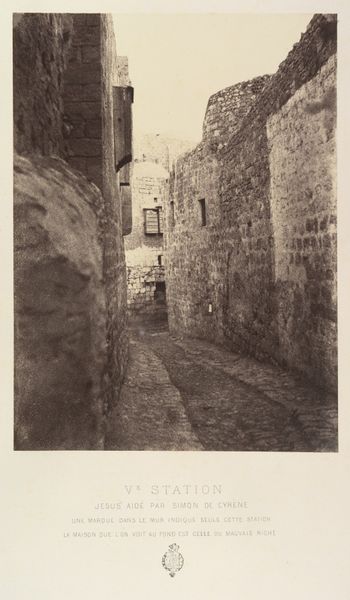
photography
#
portrait
#
african-art
#
street-photography
#
photography
#
orientalism
#
street
#
realism
Dimensions: height 164 mm, width 108 mm
Copyright: Rijks Museum: Open Domain
Editor: This photograph, taken by Famin et Cie sometime between 1863 and 1889, is titled "Gezicht op een straat met een groep mensen," or "View of a street with a group of people". It really captures a specific moment in time. It almost feels voyeuristic. How would you interpret this piece? Curator: Considering the timeframe, and the stylistic cues that point toward Orientalism, I think it is vital to see it as an example of the West's fascination with and documentation of "the Orient." This image doesn't just show a street; it presents a constructed view of North African life to a European audience. Look at the composition: do you think it's a neutral representation? Editor: Well, the people are very clearly posed, almost staged. So, it feels less like candid street photography and more like... a tableau vivant? A posed scene? Curator: Exactly. Think about who commissioned and consumed these images. They reinforced colonial power dynamics by objectifying and exoticizing the subjects. It's not just a photo; it's a statement about cultural dominance and visual ownership. How do you think this photograph contributed to the broader European understanding, or perhaps misunderstanding, of North Africa? Editor: I suppose it provided a visual shorthand, simplifying a complex reality into easily digestible images that perpetuated stereotypes and biased perspectives. So, what appears documentary is actually performative, influencing public perceptions through careful framing and constructed narratives. Curator: Precisely. We learn, perhaps uncomfortably, about the society that created the photograph just as much as we learn about the society in the photograph. Editor: That makes me look at it very differently. I initially focused on its aesthetic qualities but understanding its socio-political context reveals a far more complicated narrative. Thank you.
Comments
No comments
Be the first to comment and join the conversation on the ultimate creative platform.
